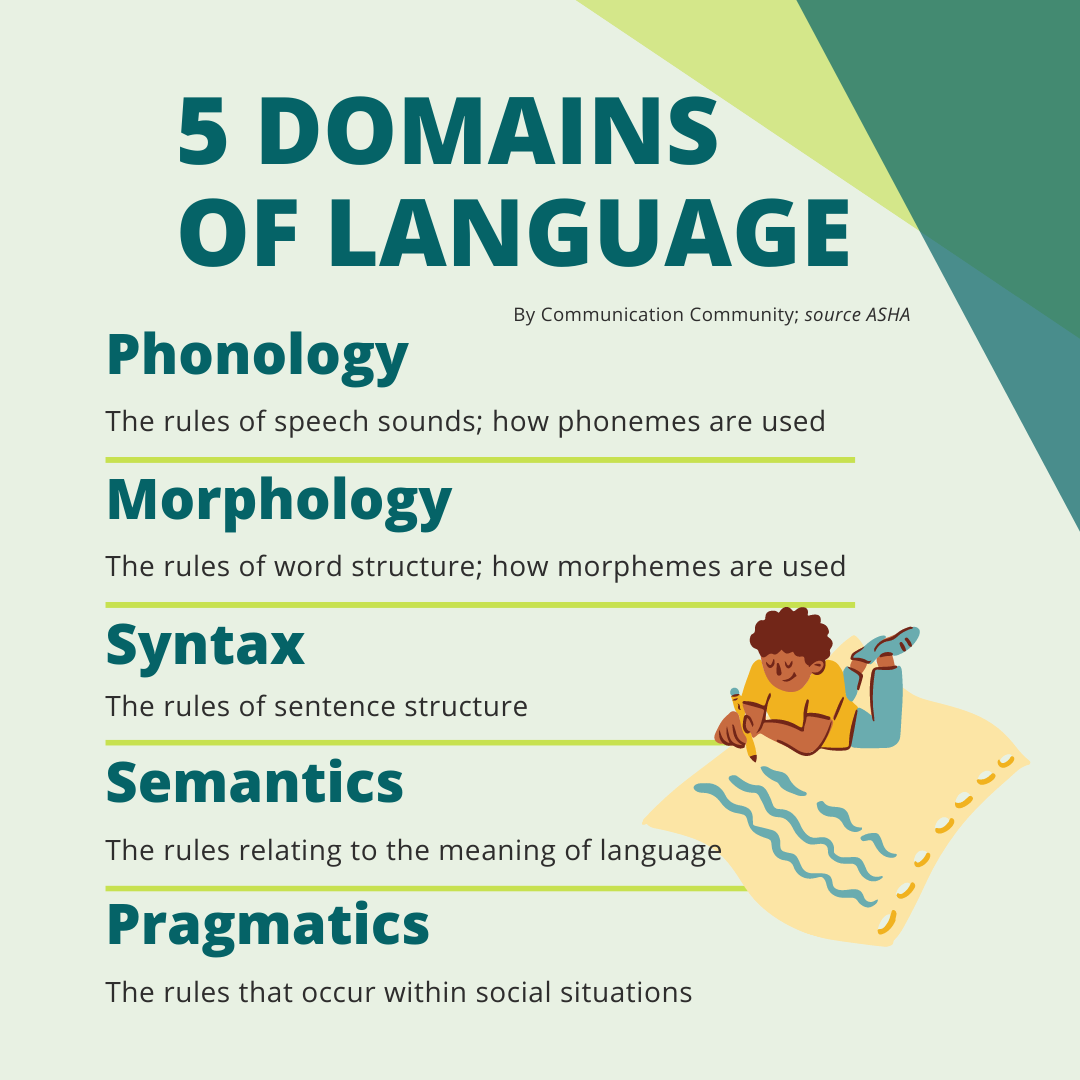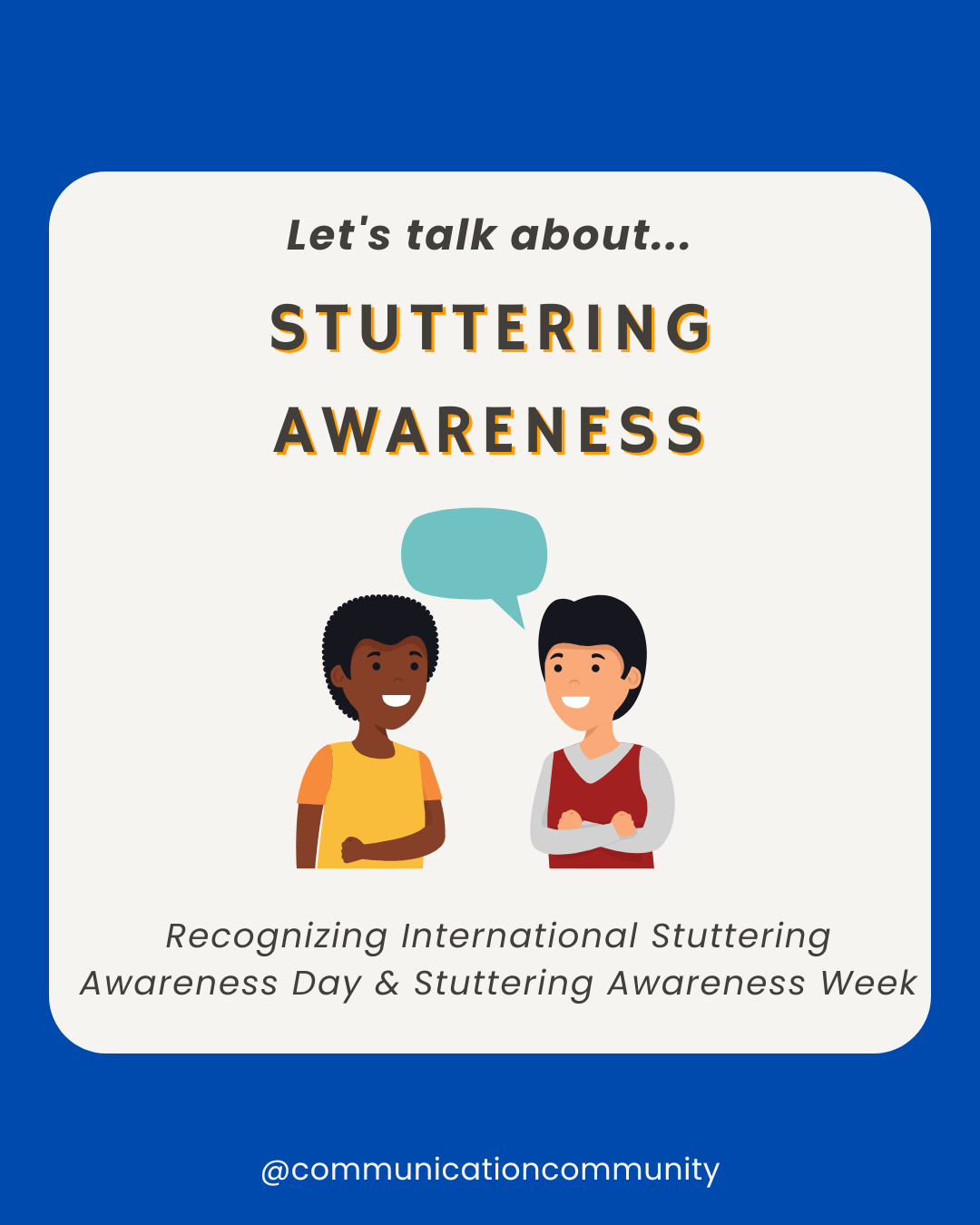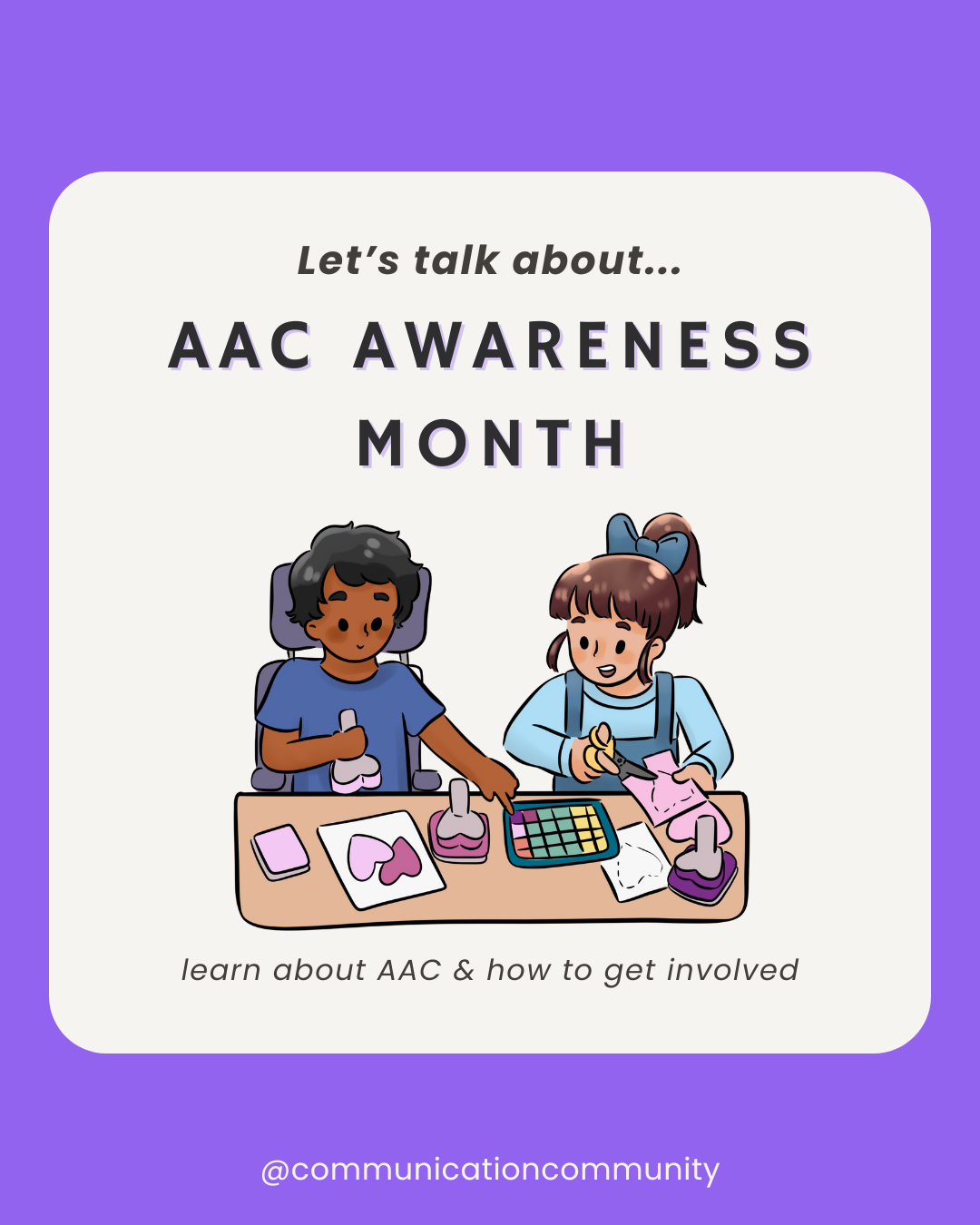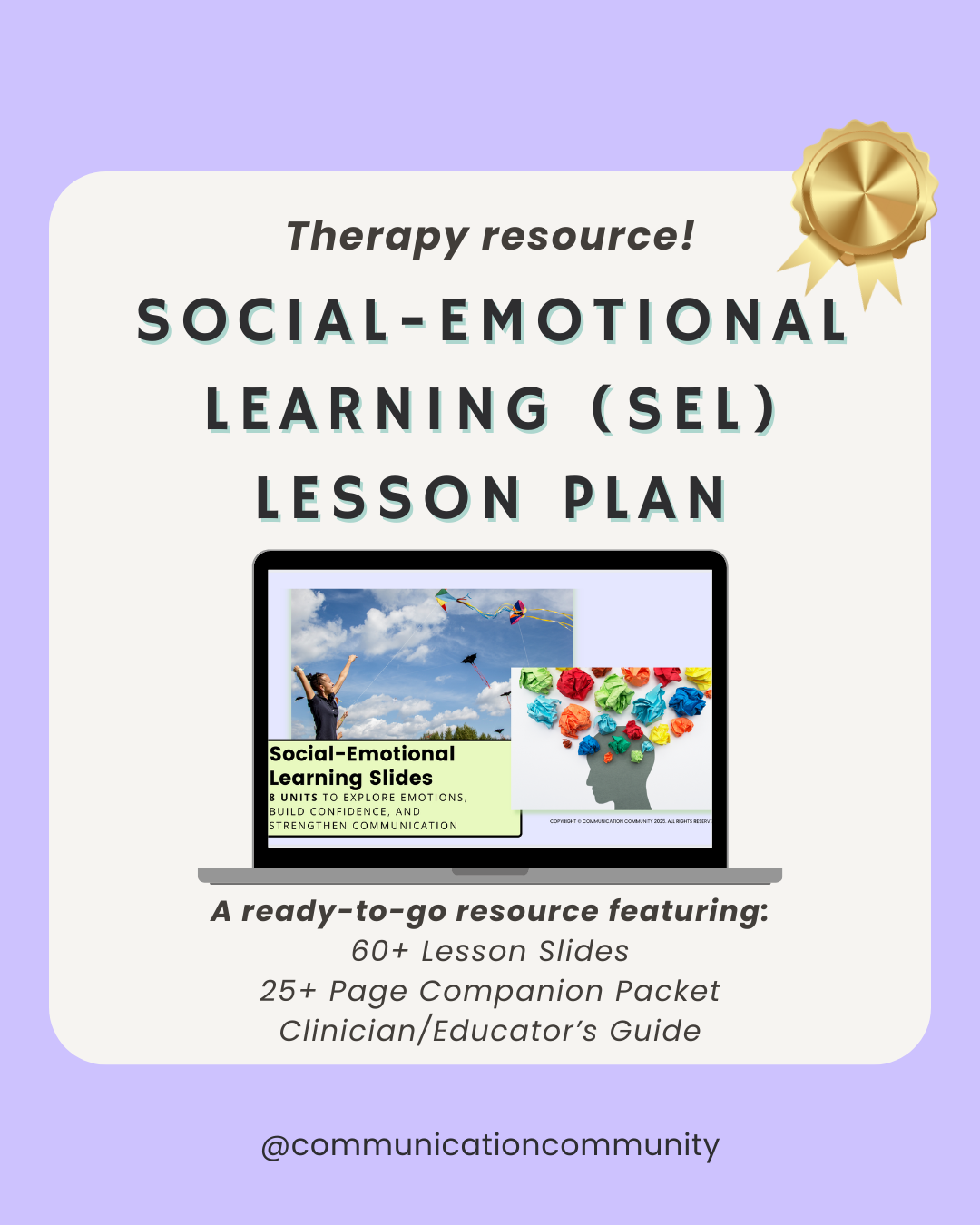Generally speaking, language consists of expressive and receptive language.
Expressive language is the language that we produce (the output) or use to communicate. Receptive language is the language that we understand (the input).
In terms of literacy, expressive language would involve the writing component and receptive language would involve the reading component. Both are important for effectively understanding and communicating messages across individuals, contexts, and settings.
Many of us would consider expressive language as speaking or using verbal language to communicate our intended message. This is true. However, using verbal language is one of many different expressive communication modalities, as one’s primary expressive language system can look different depending on the individual.
Augmentative and alternative communication (AAC) is another common expressive communication modality. For example, AAC can include a high-tech speech-generating device or the use of American Sign Language (ASL). In addition, some individuals are considered total communicators or individuals who use multiple modalities to express themselves (e.g., a combination of verbal language and AAC).
There are 5 domains within our language system: phonology, morphology, syntax, semantics, and pragmatics. These domains are present in all languages. Check out our post on the domains of language for a more thorough overview.
For the purpose of this article, we will discuss each of these domains as they relate to expressive language.

Expressive Language: the 5 domains
Phonology
The rules of speech sounds. Phonology governs how phonemes (i.e., distinct units of sounds that can affect meaning) are used in a language system, such as the rules and combinations for using phonemes. Phonemes are individual sounds, like /b/ and /h/ in the words bat and hat. These two words differ simply because of the initial phonemes /b/ and /h/. The remainder of each word sounds exactly the same, though the smallest units (phonemes) in the beginning of the word can alter their meanings entirely. A phoneme does not have meaning by itself, but combinations of phonemes do.
Within expressive language, phonology is important for distinguishing one sound from another sound when communicating. For example, if you were to say, “There is a cat in the house,” the /c/ phoneme in “cat” is surprisingly important to your message. Now, what if you made the speech-sound error of substituting /c/ with /b/ - your message would then be, “There is a bat in the house.” We’ve got a problem here (in more ways than one). This is one of the many reasons why phonological awareness (i.e., understanding of the sound structure in words) is important for speech production and developing adequate literacy skills.
Morphology
The rules of word structure. Morphology governs how morphemes (i.e., smallest units of language) are used in the language system. Morphemes are used to form words and each morpheme differs from another (aka they all serve different meanings). They cannot be broken into smaller units or else they will lose their meaning. Usually, we divide morphemes into two different types: free and bound. Free morphemes can stand alone as their own word (e.g., dog, the) and bound morphemes require another morpheme to make up a word, as they cannot occur alone (e.g., -er, -s). They differ from phonemes because they do have meanings by themselves.
Within expressive language, morphemes are used to alter the meaning of your message. Though they may be small, morphemes each offer different contributions to the message you are trying to communicate. Morphemes are also an important component in language development, as there is a hierarchical sequence and expected age of mastery for certain phonemes (see: Brown’s 14 Morphemes). For example, adding the morpheme -ed to the end of a word (e.g., “she jumped”) gives off a specific message that indicates something happened in the past. Similar to adding the plural -s to the end of the word; a message like, “the dogs” indicate that there are multiple of something versus “dog,” indicating a singular item.
Syntax
The rules of sentence structure. Many individuals use syntax and grammar synonymously. Syntax involves the particular arrangement of words in a sentence, the structure of a sentence, and the rules that correspond to the way that words are ordered into a sentence. Syntax rules are often different depending on the spoken language.
Within expressive language, there are specific grammatical (or syntactical) rules that we follow when we communicate based on the language system we are following. Let’s compare the syntactic structure of two sentences with the same meaning: one in English and one in Spanish.
English: “I have a black (adjective) dog (noun).”
Spanish: “Tengo un perro (noun) negro (adjective).”
Both sentences deliver the same exact meaning; however, the syntax of each sentence is slightly different for each language. In the English sentence, syntax indicates that the adjective precedes the noun, but in the Spanish sentence, syntax indicates the noun precedes the adjective. These are also rules to consider when writing messages so that they are effectively understood by the reader.
Semantics
This refers to the rules relating to the meaning of language and the actual meaning behind each word within a sentence within a message. You can also look at semantics like a person’s vocabulary (or lexicon) that they may use. Vocabulary development is important and expands as an individual develops their language system. Some important vocabulary knowledge includes concepts such as: synonyms, antonyms, and figurative language (e.g., metaphors and idioms). Figurative language, for example, can also drastically change depending on the language being spoken. When translated into another language, idioms (e.g., couch potato), are typically not transferable and only applicable to the language in which they were developed.
Within expressive language, each individual has gradually acquired a repertoire of words (vocabulary/lexicon) over the course of one’s lifespan that’s used to communicate day after day. This vocabulary system grows with development and within different contexts. As you would suspect, a 1-year-old would not be producing the message, “This homework is so complicated!” But you may hear that message (maybe too often) from a 15-year-old. Vocabulary systems often look different across individuals depending on their occupation, context, or environment. However, we also have the opportunity to code switch after assessing these factors. For example, legal jargon that an attorney uses in the courtroom will likely differ (quite a bit) from the language she would use when speaking to her 3-year-old child at home.
Pragmatics
This refers to the rules of language that occur within social situations. In our blog, when we reference pragmatic language, we are referring to social skills. There are numerous social skills that we take into consideration when we interact with others, such as eye contact and body awareness. Function is also an important aspect to consider when it comes to pragmatic language, as compared to structure. Because when we think of pragmatics, we think of how we are actually using language in context. For example, some common language functions include protesting (e.g., “I don’t want that!”), commenting (e.g., “Cool shirt!”), and labeling (e.g., “That’s a dog.”). Pragmatic customs in the American English language may fall drastically different from pragmatic customs found in other cultures and/or countries.
Within expressive language, pragmatics includes the types of verbal messages we frequently use when communicating. However, pragmatics can also include expressions that require no speaking at all (*cough* non-verbal language), like the eye contact and body awareness piece that was mentioned above. Non-verbal language or body language is a very important component to consider because it enhances (or even substitutes) the spoken message that we are trying to communicate. If someone is furrowing their brow with their arms crossed, you may get the message (without any spoken language) that person is feeling mad or upset. Pragmatics is also beneficial for building interpersonal rapport and relationships. In the case of this person being upset, you may make the inference that they need someone to talk to and check in with them by saying, “Are you okay?”
Similar to receptive language, expressive language skills develop over the course of time. In the first several years of life, one’s receptive language vocabulary will usually exceed one’s expressive language vocabulary! For more information regarding these approximate ages of mastery, feel free to check out our article addressing Speech and Language Milestones: Birth to 5.
Check out our article: How to Write Expressive Language Goals for information on writing goals related to these domains (free goal bank included as well).
Citations/further resources:







